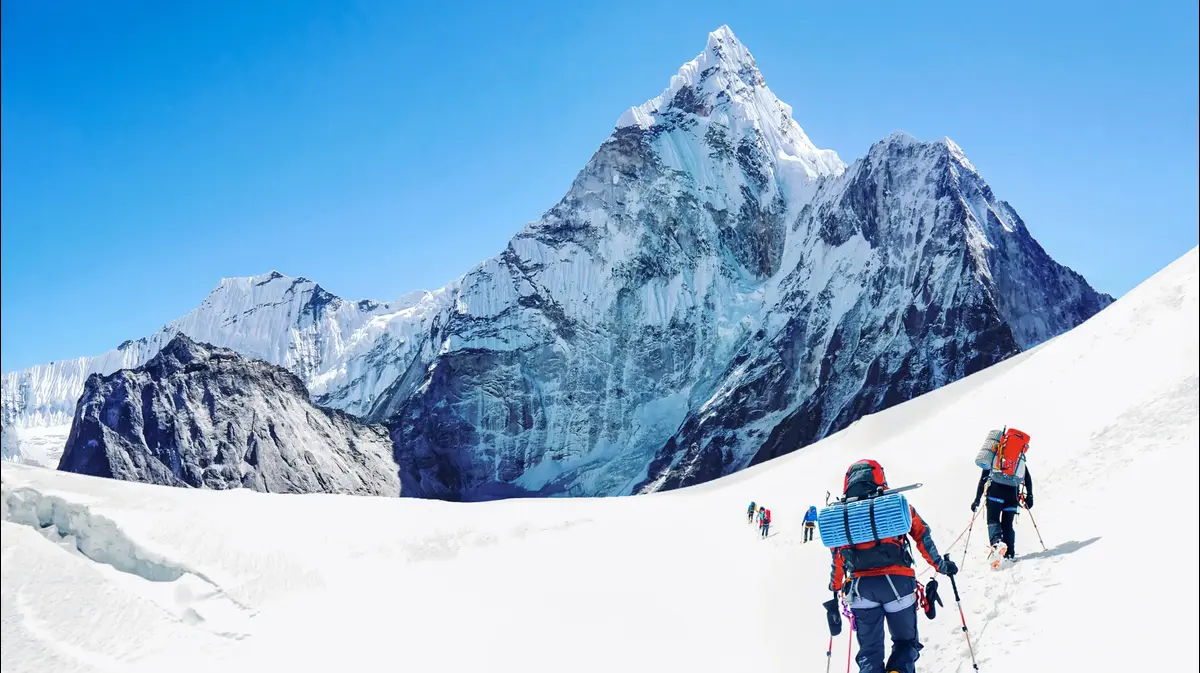A Nepalese guide has given up on driving a client to the summit of Everest when they were about to get there in order to rescue a Malaysian mountaineer in distress in the "death zone", at the end of this particularly deadly mountaineering season.
Gelje Sherpa, 30, was guiding a Chinese client to the top of the world's tallest mountain - 8849 meters - and planned to help him paraglide back down. But a few hundred meters from the summit, they discovered at more than 8000 meters altitude a man alone, trembling with cold, clinging to a rope, in the famous "death zone", a technically difficult passage where rarefied air and freezing temperatures increase the risk of suffering from altitude sickness. "When I found him in this state, I didn't have the heart to abandon him there," Sherpa told AFP.
That day, other climbers before him had passed the Malaysian climber in difficulty without seeing fit to rescue him but the guide refused to judge them. "It's a place where you have to think about your survival first," he explained. However, Gelje Sherpa did not hesitate to announce to his client whose expedition to Everest had cost at least $ 45,000 that they would not go to the summit.
«
When I decided to go down, my client initially did not agree," he said, "obviously, he had arrived there after spending a lot of money, he had been dreaming about it for years, he had to make time to come and climb here." "He got angry and said he wanted to get to the top," he continued, "I had to reprimand him and remind him that he had to go down because he was under my responsibility, that he couldn't climb to the top without me. He got angry."
The Nepalese insisted on the need to help the Malaysian come down. "Then he realised that 'rescue' meant I wanted to save him. He understood and apologized later," he added.
Read alsoAlexis Pinturault: "Climbing Everest is in a corner of my head"
Six hours of rescue
The guide placed the Malaysian under his oxygen reserve to help improve his condition but it was very difficult for him to walk. The Nepalese, who is about 1.60m tall and weighs 55kg, had to carry the sufferer on some of the most arduous sections of the mountain.
«
It is a very difficult mission to take someone down from there carrying them. But some sections are very rocky, it was impossible to drag him, "says Gelje Sherpa, "he would have broken his bones, he was already not well..." It took him nearly six hours to get him to Camp 4. "I've been on a lot of search and rescue missions, but it was very difficult," he said.
At Camp 4, another guide helped him continue his descent with the ailing climber, wrapped in sleeping bags held by ropes. Thus, they were able to drag it on the snowy slopes and carry it when necessary. When they finally reached Camp 3 at 7162 meters, a helicopter took over and transported him to base camp.
" READ ALSO Mountaineering: Nepal issues a record number of 454 permits to climb Everest
Gelje Sherpa has not seen the Malaysian mountaineer since his rescue but he has received a message of thanks. "He wrote to me, 'You saved my life, you're a god to me,'" the guide said.
12 dead and 5 missing this year
The mountaineering industry in the Himalayas relies on the experience of Sherpas, usually from the valleys of Everest. They pay a heavy price to accompany hundreds of mountaineers every year. A third of the dead in Everest are Nepalese climbers.
«
As a guide, you feel responsible for others on the mountain and you have to make tough decisions," says Ang Norbu Sherpa, president of the National Association of Mountain Guides of Nepal, "what he has done is honorable."
For the 2023 mountaineering season, Nepal issued a record 478 permits to foreign climbers to climb Everest and about 600 climbers and guides reached the summit. But the death of twelve climbers is to be deplored, while five are still missing.





/cloudfront-eu-central-1.images.arcpublishing.com/prisa/ERGL3EY5MFESJLG3PJ56L4NVAY.jpg)

/cloudfront-eu-central-1.images.arcpublishing.com/prisa/EN3SW5NDZVGYPJEKNJGQDIP2UQ.jpg)







